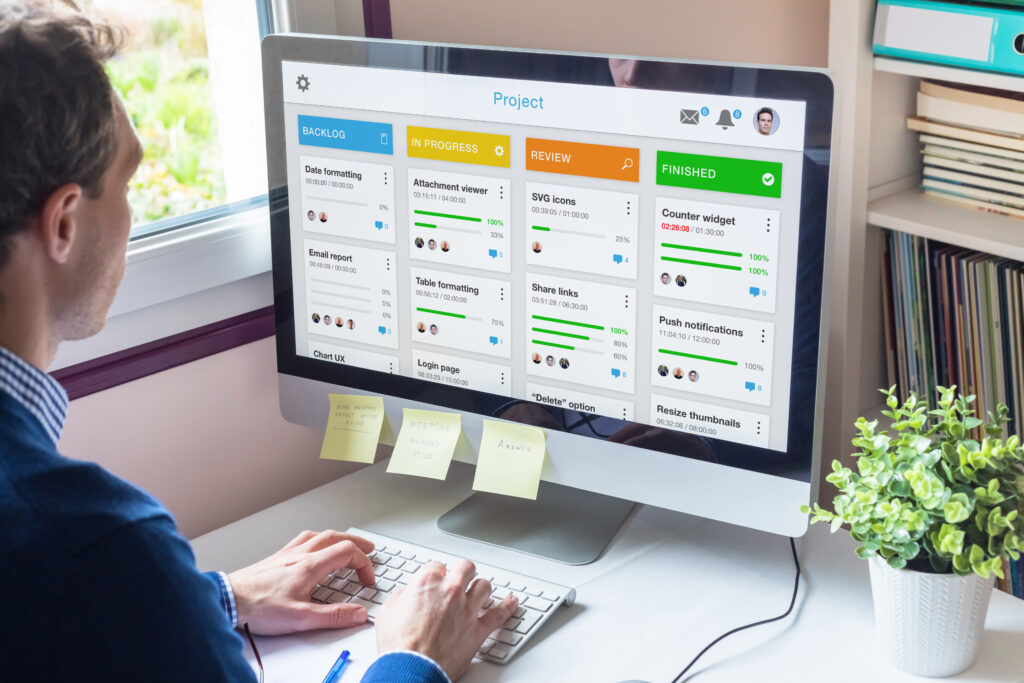Many companies embrace remote work, but keeping teams connected to ensure collaboration, productivity, and security is challenging. Managing communication, projects, and a positive company culture requires the right tools. These tools can help your remote team work seamlessly, optimize workflows, and feel supported.
This article will explore some of the top solutions for managing remote teams. From video conferencing and project management to employee engagement and cybersecurity, we’ll look at the software, apps, and platforms to help your organization thrive in a remote work environment.
1. Communication and Collaboration Tools
These tools are the cornerstones of a successful remote team, facilitating seamless communication and collaboration despite physical distance.
- Video Conferencing Platforms – Zoom, Microsoft Teams, and Google Meet enable face-to-face interaction, virtual meetings, and screen sharing. They allow for real-time communication, team brainstorming sessions, and fostering a sense of connection among remote colleagues.
- Instant Messaging Apps – Tools like Slack and Microsoft Teams—which offer ms 365 copilot benefits like intelligent task suggestions and in-line translation—facilitate quick communication, instant messaging between team members, and group chat functionality. They enable real-time collaboration and information sharing, streamlining quick updates and questions.
- Project Management Software – Platforms like Asana, Trello, and Monday.com help manage projects, assign tasks, track progress, and collaborate efficiently. These tools offer centralized task management, promote transparency, and keep everyone’s goals and understanding aligned.
2. Productivity and Time Management Tools
These tools help remote workers stay organized, manage their time effectively, and increase productivity.
- Time Management Software: Time tracking tools like Toggl Track or Time Doctor help employees track their time on specific tasks and projects. This data can be used for individual productivity analyses, project cost estimation, and optimizing workflows.
- Document Sharing and Collaboration Tools – Cloud-based platforms like Google Drive, Dropbox, and Microsoft OneDrive enable secure document sharing, real-time collaboration, and version control. This eliminates the need for email attachments and ensures everyone can access all documents to keep them updated.
- To-Do List and Task Management Apps – Tools like Todoist, TickTick, and Microsoft To-Do allow individuals and teams to create to-do lists, set priorities, and manage tasks efficiently. They promote organization, help plan workloads, and keep track of important deadlines.
3. Employee Wellbeing and Engagement Tools
These tools foster a positive remote work environment, promote employee well-being, and encourage engagement within the remote team.
- Virtual Coffee Break Platforms – Tools like Remo or Gather allow for informal virtual interactions and social activities like virtual coffee breaks or online games. These foster a sense of connection, combat social isolation, and build positive relationships among remote colleagues.
- Employee Recognition Platforms – Platforms like Bonusly or Lattice recognize and appreciate employee contributions, fostering a culture of appreciation and promoting motivation among team members.
- Wellness Platforms – Tools like Headspace or Calm offer employees access to meditation, mindfulness exercises, and mental health resources. This helps manage stress, promotes emotional well-being, and contributes to a positive work-life balance for remote workers.
4. Security and Compliance Tools
Ensuring data security and compliance is crucial for remote work environments.
- Virtual Private Networks (VPNs) – VPNs encrypt internet traffic and provide secure access to company resources from any location, minimizing the risk of data breaches.
- Endpoint Security Tools – Antivirus and anti-malware software safeguard individual devices from security threats like malware and phishing attacks, protecting sensitive data and company information.
- Data Encryption Tools – Provide remote employees with secured company-managed devices with advanced encryption for all stored sensitive data. Require multi-factor authenticated cloud gateways like virtual private networks (VPNs) when remotely accessing company systems and files.
Key Practices for Managing Remote Teams
Beyond the specific tools, fostering a successful remote work environment requires strategic implementation and mindful practices.
- Develop Clear Communication Protocols: Establish clear communication guidelines for different situations, such as meeting frequency, preferred communication channels, and response timelines.
- Set Expectations and Performance Metrics: Define clear expectations for remote work performance, set achievable goals, and utilize tools like time-tracking software to measure individual and team productivity.
- Invest in Employee Training and Development: Create engaging virtual training modules that combine interactive elements like quizzes, videos, and discussion boards to teach remote employees new skills. Provide access to online classes, books, and other resources to enable continuous learning.
- Promote a Culture of Trust and Accountability: Establish clear remote work policies and expectations around communication, availability, deliverables, and deadlines. Recognize and reward remote employees who demonstrate responsibility, collaboration, and leadership.
- Encourage Regular Feedback and Check-ins: Schedule one-on-one meetings with remote employees to provide feedback, address concerns, and maintain a connection.
Final Thoughts
By carefully selecting and implementing tools for communication, productivity, security, and company culture, businesses can enable remote teams to collaborate seamlessly. With the right technology investments, distributed workforces gain transparency, remain organized, feel appreciated, and ultimately drive the business forward through enhanced productivity and engagement.
Tools reduce distance barriers and foster trust. As remote work evolves, leveraging solutions purpose-built for distributed teams will only grow more crucial in unlocking productivity and potential.
Author Bio
Sarah Jones is a passionate writer and researcher focused on future-proof work practices. She enjoys exploring innovative solutions for remote teams and empowering individuals to thrive in a changing work landscape.

James Oliver is a professional blogger and a seasoned Content writer for technologyspell.com. With a passion for simplifying technology and digital topics, he provides valuable insights to a diverse online audience. With four years of experience, James has polished his skills as a professional blogger.





